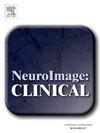Predictive value of resting-state fMRI graph measures in hypoxic encephalopathy after cardiac arrest
IF 3.6
2区 医学
Q2 NEUROIMAGING
引用次数: 0
Abstract
Introduction
Current multimodal prediction models can determine the prognosis of about half of comatose cardiac arrest patients. We investigated whether whole-brain graph-theoretical measures from early resting-state functional magnetic resonance imaging (fMRI) three days after cardiac arrest discriminate between good and poor outcome and improve outcome prediction.
Methods
We conducted a prospective cohort study on comatose cardiac arrest patients on intensive care units. Resting-state fMRI three days after cardiac arrest was used to quantify whole-brain functional connectivity, global efficiency, clustering coefficient, and modularity. Neurological outcome at six months was classified as good or poor (Cerebral Performance Category 1–2 vs 3–5). Logistic regression models were used to examine between-group differences and study the additional value of graph-theoretical measures to clinical and EEG-based prediction.
Results
In seventy included patients (good outcome n = 44, poor n = 26), whole-brain functional connectivity and clustering coefficient (but not global efficiency and modularity) were significantly lower in patients with poor outcome. Connectivity of nodes in posterior brain areas most prominently correlated with outcome. Clustering coefficient showed strong correlation with whole-brain functional connectivity. Patients with continuous EEG patterns differed in whole-brain functional connectivity levels from those with suppressed or epileptiform patterns. Combining functional connectivity or graph measures with clinical and EEG-based predictors slightly improved outcome prediction.
Conclusion
fMRI-based whole-brain functional connectivity is a sensitive measure for encephalopathy severity after cardiac arrest, according to relations with established EEG categories and discrimination between good and poor outcome. Additional predictive values for outcome seem small. Graph measures do not provide complementary information.

静息状态fMRI图测量对心脏骤停后缺氧脑病的预测价值
目前的多模态预测模型可以确定大约一半的昏迷性心脏骤停患者的预后。我们研究了心脏骤停后3天的早期静息状态功能磁共振成像(fMRI)的全脑图理论测量是否能区分预后好坏,并改善预后预测。方法对重症监护病房的昏迷性心脏骤停患者进行前瞻性队列研究。心脏骤停后3天静息状态fMRI用于量化全脑功能连通性、整体效率、聚类系数和模块化。6个月时的神经预后分为好或差(脑功能分类1-2 vs 3-5)。使用逻辑回归模型检验组间差异,并研究图理论测量对临床和基于脑电图的预测的附加价值。结果在纳入的70例患者中(预后良好的44例,预后较差的26例),预后较差的患者全脑功能连通性和聚类系数(但不包括整体效率和模块化)显著降低。脑后区淋巴结的连通性与预后最显著相关。聚类系数与全脑功能连通性有较强的相关性。连续脑电图模式患者的全脑功能连通性水平与抑制或癫痫样模式患者不同。将功能连通性或图形测量与临床和基于脑电图的预测相结合略微改善了结果预测。结论基于fmri的全脑功能连通性是衡量心脏骤停后脑病严重程度的敏感指标,根据其与已建立的脑电图分类的关系以及预后好坏的区分。结果的附加预测值似乎很小。图表测量不能提供补充信息。
本文章由计算机程序翻译,如有差异,请以英文原文为准。
求助全文
约1分钟内获得全文
求助全文
来源期刊

Neuroimage-Clinical
NEUROIMAGING-
CiteScore
7.50
自引率
4.80%
发文量
368
审稿时长
52 days
期刊介绍:
NeuroImage: Clinical, a journal of diseases, disorders and syndromes involving the Nervous System, provides a vehicle for communicating important advances in the study of abnormal structure-function relationships of the human nervous system based on imaging.
The focus of NeuroImage: Clinical is on defining changes to the brain associated with primary neurologic and psychiatric diseases and disorders of the nervous system as well as behavioral syndromes and developmental conditions. The main criterion for judging papers is the extent of scientific advancement in the understanding of the pathophysiologic mechanisms of diseases and disorders, in identification of functional models that link clinical signs and symptoms with brain function and in the creation of image based tools applicable to a broad range of clinical needs including diagnosis, monitoring and tracking of illness, predicting therapeutic response and development of new treatments. Papers dealing with structure and function in animal models will also be considered if they reveal mechanisms that can be readily translated to human conditions.
 求助内容:
求助内容: 应助结果提醒方式:
应助结果提醒方式:


